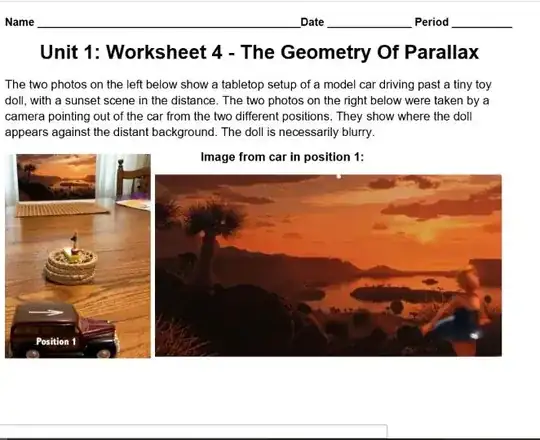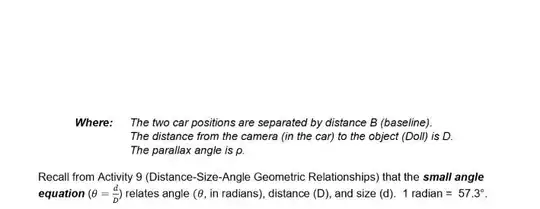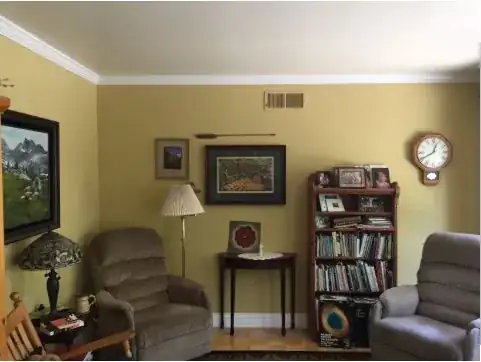I need a reality check. All of the context around this question would take way too long to explain, but I'm perfectly willing if I haven't provided enough information here. I'm trying to figure out if I'm just not getting my daughter's high school astronomy lesson or if the lesson itself is incomplete.
Is the pixel measurement of the distance between the position of a subject across two photos from a moving camera, along with the plate scale of that camera/lens setup, sufficient data to calculate the distance to the subject? Let's pretend for now that conditions were ideal so that the only movement of the camera is pure translation along one axis, no other translation or rotation. Is that sufficient data?
If so, does it require a step to convert from the angle calculated by multiplying that pixel distance by the plate scale to the angle between those perspective points with the subject at the vertex? Or is the angle produced by the calculation from the pixel movement of the object (again, with the camera having produced the movement and the subject fixed) multiplied by the plate scale the correct angle to use in the parallax equation to calculate the distance?
Now suppose, as is the case in this assignment, that the photos we are given to calculate from are quite inconsistent, with probably all cartesian movements occurring between frames, as the apparent size and vertical position of the subject changes as well as the horizontal position. Now can the pixel distance be used to calculate the distance to the subject? If so do you measure diagonally from point to point or can you simply measure the horizontal difference to get a more accurate measurement? It seems to me that even if you can do the calculation from the first example, with ideal reference photos and no other data available, you can't if the photos were not produced in a manner that would isolate other variables.
Maybe I'm overthinking this, but it seems like the assignment is terrible and teaches the wrong lesson. I need a reality check before I consider approaching her teacher about that. Thank you!
Updating to add pics. Everything beyond this was added one day after originally posting the question.
There are three different stages to the lesson. First example with sunset image has a different plate scale than the painting on the wall and the tree, which have the same ~0.15mm/pixel plate scale. She has to do screenshots from a small portion of the browser window. Dumb online learning site is very frustrating. Also it's hard to differentiate between what was originally written and what she has written as she tried to do it before reaching out to me.
The other issue I'm personally having is that there are fundamentally false statements, at least by the standards I have for a science text/course. For instance it says that every camera, no matter how simple or complex, has a fixed plate scale. No, every camera and lens combination does, and only if the lens doesn't zoom. And it seems to me like even changing the focal distance alters the view angle very slightly on at least some of the lenses I've used as a commercial photographer. Another example is the insistence that you are measuring the distance from the camera to the subject. In fact, as the diagram shows, what is being measured is the distance from the subject to the nearest point on the line between the two points where the photos were captured. It's a fine point, but that sort of inaccuracy makes me question everything about the text.
Anyway, thank you for your help!









